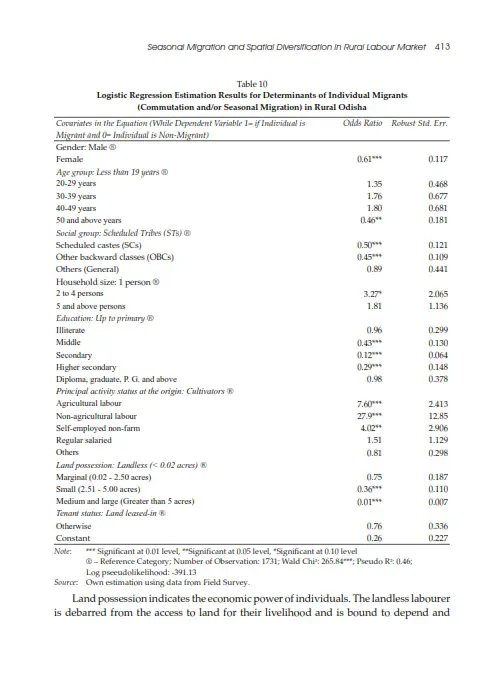 Image credit: admin
Image credit: admin
Abstract
The rising employment opportunities outside agriculture has brought significant changes in the rural labour market and landless labour in particular. In this study among the landless rural labour of semi-arid region in Odisha are identified as migrant workers tends for spatial diversification, despite several state-intervention schemes such as MGNREGA work, food security public distribution system. In this backdrop, this paper has attempted to examine the underlying factors in the changing pattern of rural labour diversification. This study is depended on both primary and secondary data sources. This study collected primary data from the household survey in Odisha. The analysis of the study uses quantitative and econometrics tools such as logistic regression. Assuming improved living condition at the household level, this paper also argues that seasonal migration is a routine and inseparable livelihood strategy in the semi-arid zones of Odisha. That generates employment opportunities, meets the credit needs of poor households, and minimizes the gap between patron (landlord, moneylenders) and client (landless and marginal farmers) relationship. Unless the institutional arrangements function well, seasonal migration should be promoted as an alternative livelihoods strategy in the semiarid zones.